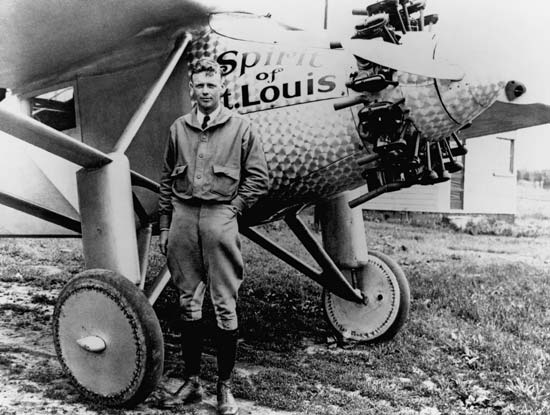The title of this blog entry comes from a book by Peter H. Diamandis (of X-Prize fame) and Steven Kotler. Having just finished reading it I highly recommend all of you who are interested in the future to get a copy from the library, buy it or get it in e-book format.
The authors acknowledge we live in “turbulent times” but the book focuses not on hand wringing, dire predictions, but on a positive future driven by rapid innovation leading to abundance. As I have stated in earlier blogs we are bombarded with warnings about sustainability and a bleak future. But we are the authors of our own defeat, as well as the inventors of our future success.
Here are some examples of what I mean:
In the 1970s it was predicted by experts that we would run out of oil in the early decades of the 21st century. Yet today we are awash in the stuff with no limit in sight.
In 1900 the average human life span globally was about 40. Today we are approaching 80, a doubling.
In the 1980s I was involved with a company that was documenting 90-baud transmission rates over land lines for countries in Africa. This technology represented the best we could do for Sub-Saharan countries that lacked modern telecommunications infrastructure. Yet today Africa has skipped land line infrastructure entirely and moved to mobile phones and mobile data networks. The growth has been astronomical since 2000, when mobile users represented 2% of Africa’s population. By 2009 penetration had grown to 28%, a growth factor of 14. And by next year, 2013, forecasters predict that 70% of Africa’s population will have access to mobile technology.
In the 1980s no one had heard of micro loans. Banks didn’t loan money to small business in places like Africa, Central and South America or South Asia. But today we have organizations like Kiva.org providing micro-funding for tens of thousands of Developing World entrepreneurs in increments of $25.
Techno-philanthropists didn’t exist in the 1980s either. But today people like Bill and Melinda Gates are pouring billions into projects to end diseases like malaria, or provide new educational models that use the power of the Internet and mobile devices to personalize learning beyond bricks and mortar classrooms.
For the authors of this book abundance is just around the corner. They see a world in 2050 with nine billion of us having access to clean water and clean air, nutritious food, affordable housing, personalized education, best practice medical care, and energy that comes from non-polluting sources capable of meeting our needs for centuries to come.
How will we get there?
The authors see us already rapidly ascending an accelerating path to achieve abundance for all humans on the planet. And much of what I write at this blog site speaks to this progress in so many fields of science and technology. For both the authors of “Abundance” and I believe that we have within our means the ability to create a very bright future for humanity and the rest of life on this planet.
Diamandis and Kotler set the stage with their modified Maslow hierarchy called the Abundance Pyramid (see below) and then go on to illustrate the advances we are making in all of these areas through technological innovation.
The Story of the Spirit of St. Louis
Diamandis, as I mentioned earlier, organized the Ansari X Prize that led to Burt Rutan’s sub-orbital SpaceShipOne achievement. He and Kotler write about the inspiration behind the X Prize. It’s an interesting story. Diamandis was inspired by the story behind Charles Lindbergh’s solo flight across the Atlantic Ocean in 1927. It begins with a French shepherd, Raymond Orteig, who emigrated to America before the First World War. He started as a waiter and worked his way up to eventually become a hotelier in New York City. Orteig’s hotel hosted aviators after the war and the stories they told inspired him to propose an idea to the Aero Club of America in 1919. His offer, a $25,000 prize for the first aviator to cross the Atlantic Ocean, non-stop, either from Paris to New York or the other way. He put an expiry date on the prize – five years. But with no takers after five years, he extended his offer for another five.
What you may not know is that Lindbergh, a fairly novice aviator when compared to others who attempted to win the $25,000, was preceded by several who failed in their attempts. Two perished taking off in overweight airplanes in 1926. In 1927 four more died making the attempt. Lindbergh, “the flying fool” according to the media of the time, succeeded where these others failed. And in winning Orteig’s prize launched trans-Atlantic air travel, the modern era of commercial aviation, and an industry worth today $300 billion dollars annually.

The Spirit of Competition Has No Limits
The lesson of Lindbergh is the inspiration that today is providing the fuel for solving all kinds of technological challenges. We have seen an eruption of incentive prizes to challenge individuals and companies to find new ways of doing things.
- The Ansari X Prize has led to the launch of a number of commercial space ventures with passenger sub-orbital flights to begin in the next year or two.
- The X Challenge in 2007 inspired two companies to develop vertical take off and landing rocket technology for landing on the Moon.
- A similar X Prize has awarded three winners to develop production-ready cars that can achieve better than 2.35 liters per hundred kilometers (100 miles per gallon).
- Recently, an oil cleanup X Challenge has been launched to encourage the development of new technologies to remediate oil spills.
- Google has a Lunar X Prize offering $30 million to the first team to build a robot rover to land on the Moon and transmit images and data back to Earth.
- Another prize worth $10 million will award the first team to sequence the genome of 100 healthy centenarians within 10 days.
- A prize of $10 million has been offered to the first team to develop a tricorder, inspired by the medical device portrayed in the TV science fiction drama, Star Trek.
When I finished the book I started thinking about all the problems and challenges we face that through a prize might lead to novel solutions. Here’s a list of some of my prize ideas:
- A series of prizes to the first teams to develop cures for a wide range of insect-born diseases. These should be for big amounts, in excess of $100 million for diseases that kill millions annually.
- A prize for an easily reproducible grey water to freshwater conversion system that can be built for less than $100.
- A prize for a waterless sanitation and composting system that costs less than $50.
- A prize for the first first voice programmable robotic home helper.
- A prize for a universal translator that can instantly transcribe the most commonly spoken languages here on Earth including properly translating idioms and expressions.
- A prize for the first demonstrable space elevator linking a ground station to a geostationary orbiting satellite or platform in space.
- A prize for the first developer to design and build an affordable modular home for a family of four containing cooking, refrigeration, lighting, ventilation, sanitation, plumbing, grey water recovery systems, off the grid power generation and that could be replicated anywhere in the Developing World for less than $10,000.
I invite you, my readers, to come up with and share lists of your own. Who knows, maybe this exercise in crowdsourcing will lead to some amazing breakthroughs here in the 21st century.










The key to realizing all the desirable “goods” is cheap non-polluting residential scale energy. Bill Gates thinks residential scale systems are non-starters, and that huge base load traveling wave or thorium cycle fission reactors to power the grid are the answer. That seems doubtful. Any answer that concentrates the energy into capital-intensive monolithic power plants and distribution grids seems problematic. But even if a more efficient grid were taken to be the solution, and there is little doubt that would provide some benefit to most of the world, a good technical answer to a better grid base load generator still eludes the world’s top engineers and scientists.
Fusion, as always, still seems 93 million miles and 50-years away (with the possible exception of Bussard’s polywell concept, which is marginally funded by the US Navy and which has maybe a 10% chance of proving out within the next decade.) All of the X-prizes you suggest seem worthwhile, but in terms of overall benefit to humanity, only significant improvements in the economics of energy production and distribution could affect the greatest good for the greatest number.
The physical concentration of 80% of hominid population into 50 impersonal mega-cities is wrong headed in principle. Cheap and widely distributed energy coupled with global community electronic communication and AI mind-meld would allow the world’s population to become much more happy, secure, and self-sufficient, by diffusion into millions of sustainable and environmentally sound small communities. Talk about waste and pollution; to live a cramped and crowded degenerate middle class lifestyle in any of the stinky air mega-cities costs about $10,000 per month. Thousands of small towns all across America actually provide a better quality of life for about $2500 per month. In most of the world, $1,000 per month would pay for a great quality of life in small towns. Here in South Texas, $3,000 per month buys 5-10 acres of rural land with municipal water, independent septic system, DSL, grid electricity, and 3,000 square feet of modern residence under roof. A good residential water well that makes over 500-gallons per hour costs about $10,000. Major shopping and hospitals are 15-minutes away by road. I’m thinking it’s mainly crazy masochists that are living in cities.
Generation IV fission reactors need to be introduced into the power equation. They are passively safe. They can burn spent fuel from older reactors. They can be small (no bigger than a small factory in footprint) and they can run without maintenance. Check out TerraPower and their backyard nuclear reactors. When they become furnace sized I will want one for my house and I will want to be off the grid.
Well, GE/Hitachi should soon get the NRC answer that will determine if Gen IV is going to happen. No nuclear engineer thinks it is possible to generate heat with Gen IV designs as cheaply as with water-cooled designs. The pressures are higher, the temperatures are higher, the alloys are more expensive, the vessels, pumps, piping, valves, etc, are more costly, and more fuel enrichment is needed to achieve a critical mass in a smaller space. Silex might possibly drop enrichment costs enough to make small gas-cooled reactors practical, but the NRC might not allow it. If Silex works in the US, it would soon work in rogue nations. All the preliminary reports on the Silex process suggest enrichment over 20% is possible at costs perhaps as little as 10% of centrifuges. If you have uranium hexafloride already enriched to over 20% as feedstock, you don’t need many thousands of centrifuges to enrich to 90%+ weapons grade. I just don’t see much positive in Gen IV, unless Silex proves out at commercial scale. But make no mistake; one of the costs of Silex enrichment would be increased risk of weapons proliferation.
I suppose if enrichment were cheap enough, as might be possible with Silex, the well-proven standard compact sealed naval reactor designs operated in warships by the US Navy might be safe and competitive if implemented for commercial power production. Bill Gates has it right; if we are going to do better with fission reactors it will likely be with traveling wave or thorium cycle designs.
My fear is that 3-D printing, however fabulous a technology, might divert engineers from the Drexlerian nanofactory. We can’t be certain that ultimate control over matter can fully be reached by even the most advanced 3-D printing devices, whether alone or enhanced by additional molecular self-assembly techniques. The pursuit for molecular manufacturing must be kept alive and should not follow the path of the space program in the seventies.
And maybe the X-prize foundation can play a role in this.
It would be premature to create an X-prize for molecular manufacturing itself, because no team would be interested because it’s too long-term a goal. But what about, let’s say, the creation of a game based upon the “NanoEngineer” software for nanoscale design and simulation. Such a game could, when played and if possible to begin with, fill out the engineering gaps in the foresight nanofactory roadmap, yes, gamification of drexlerian molecular design. And this is computer-based and doesn’t have to be so long-term.
I have no idea if such kind of sofware is “gamifiable” and if so, as succesful as Stanford’s Foldit in attracting large numbers of players.
3-D printing is a great technology and it might well be that ultimately it will prove to be so efficient that it obviates the need for molecular manufacturing, but the thing is that one shouldn’t bet on one horse only. People should consider “plan B’s”. Ray Kurzweil for instance, seems to find it necessary to invest money into the brute-force bioltechnology solution to defeat aging like the one the SENS foundation is working on. These are brilliant people, but they are so surrealisticly sure about the infallibility of their own vision that the question “what if not” never crosses their mind. Ray is already in his sixties, he must really look broader in order not to fail to get across the “mathusalaritarian event horizon”.
If this was a stupid question, sorry for your time, I’m not an expert by any means.
So from your comment I assume you would like to see a prize associated with manufacturing technologies both biomolecular and 3D.
[…] understand (through data and graphs) that the world is in fact getting better (see my first book: Abundance: The Future is Better Than You Think) helps counter the continuous flow of negatives flowing through the news […]